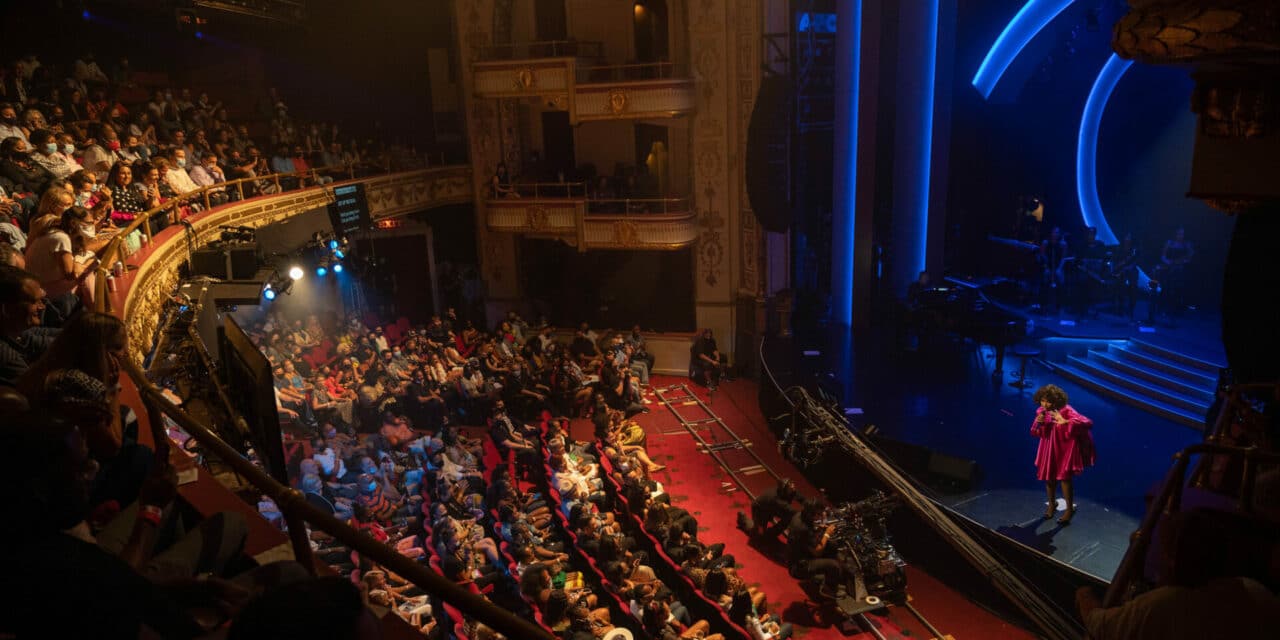RESPECT: Jennifer Hudson is shown performing at The Apollo Theater in Harlem in 2021. (Shahar Azran)
The end of segregation in 1964 also signaled the end for hundreds of American nightclubs, music halls and theaters that were the foundation of what was termed the “Chitlin’ Circuit” from the 1930s to ‘60s.
The venues, which were cultural anchors in Black communities across the South, Northeast and Midwest, were largely abandoned, boarded up, bulldozed and forgotten after Black performers gained access to previously off-limits theaters and Black audiences followed. Only a handful of these historically significant venues survived. Today, even fewer are successfully operating as live performances spaces, most under the auspices of community-minded non-profits.
Topping the list is The Apollo Theater in Harlem, New York, which is celebrating its 90th anniversary this year as well as the organization’s first expansion, with the opening Feb. 1 of The Apollo Stages at the revitalized Victoria Theater. The celebration includes a series of upcoming concerts, comedy shows and educational programs as part of the winter and spring 2024 season.
“The Apollo is very lucky to have a storied history,” said Fatima Jones, chief marketing and communications officer for The Apollo. “It’s a world-renowned brand and a world-renowned organization and it has had an impact on entertainment for 90 years. It’s an American cultural gem.”
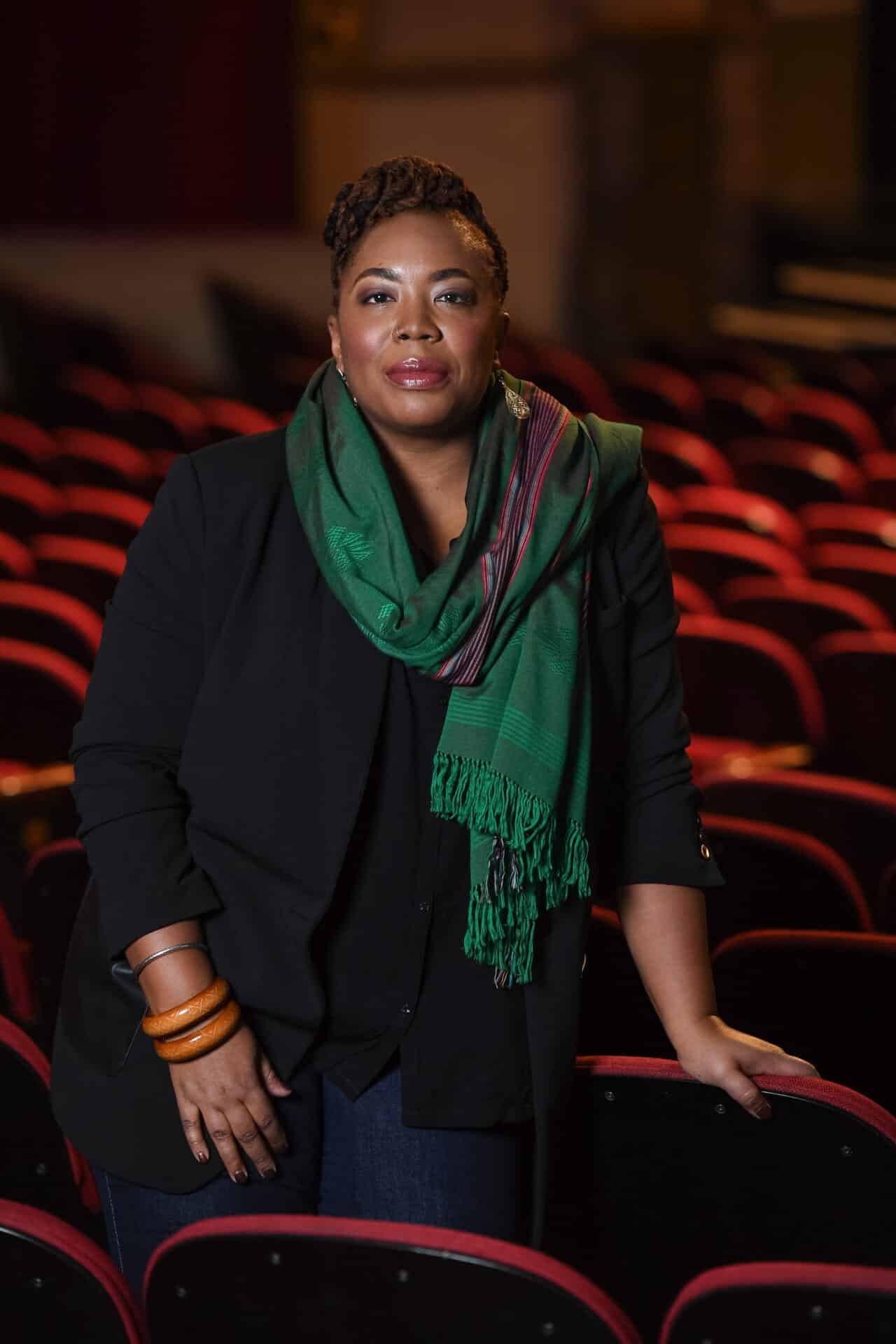
Fatima Jones, chief marketing and communications officer for The Apollo.
When it opened in 1913, The Apollo had a white audience. The theater didn’t cater to Black patrons until 1934; the same year the first Amateur Night contests began. Purchased in 1979 by Black political leader and businessman Percy Sutton, the refurbished venue reopened in 1985. Two years earlier, it was added to the National Register of Historic Places. Initially aired in 1955, the brand profile rose significantly with the broadcast series “Showtime at The Apollo,” which aired from 1987-2008 and in 2018 on Fox.
Having gone bankrupt in 1984 and today operated by the not-for-profit Apollo Theater Foundation, The Apollo was one of the first theaters in New York City to integrate, and continues to embrace performer and audience diversity. The Apollo has served as a testing ground for new artists working across a variety of art forms and has ushered in the emergence of many musical genres including jazz, swing, R&B, gospel, blues, soul and hip-hop. Among the performers who launched their careers at The Apollo are Ella Fitzgerald, Sarah Vaughan, Billie Holiday, James Brown, Stevie Wonder, Gladys Knight, Luther Vandross, H.E.R., D’Angelo, Lauryn Hill, Jazmine Sullivan and Miri Ben Ari.
“People come here because they’ve read about James Brown and Billie Holiday performing at The Apollo or they saw Drake perform at The Apollo. They understand that artists feel like it is a rite of passage to perform here,” Jones said. “The artists know the audience will be made up of real music lovers.”
The two, new black box stages at the Victoria are 30 steps from the historic 1,500-capacity theater. The spaces, which are 100 and 200 seats, are programmed and managed by The Apollo. Funding came from The Apollo, financial gifts from the state of New York and private donations.
“In these new spaces, we can present things that are a little smaller in nature,” Jones said. “We can produce smaller, emerging artists, artists that don’t need to feel the pressure of filling 1,500 seats. We want that for the artists, to support their ideas and see them grow. That’s really what The Apollo has been doing all along.”
New programming includes an array of Apollo commissions, including the recently announced Soul Science Lab’s The Renaissance Mixtape, an immersive theatrical concert that uses elements of hip-hop culture and visual storytelling to highlight voices of the Harlem Renaissance led by Brooklyn-based artists Chen Lo and Asante Amin, four-time Grammy nominee and Apollo New Works artist Stefon Harris and his band Blackout, as well as “In the Same Tongue” (April 12-14), a vibrant movement, sound and language-based work by choreographer Dianne McIntyre with original music by composer Diedre Murray and poetry by the late Obie award-winning playwright Ntozake Shange.
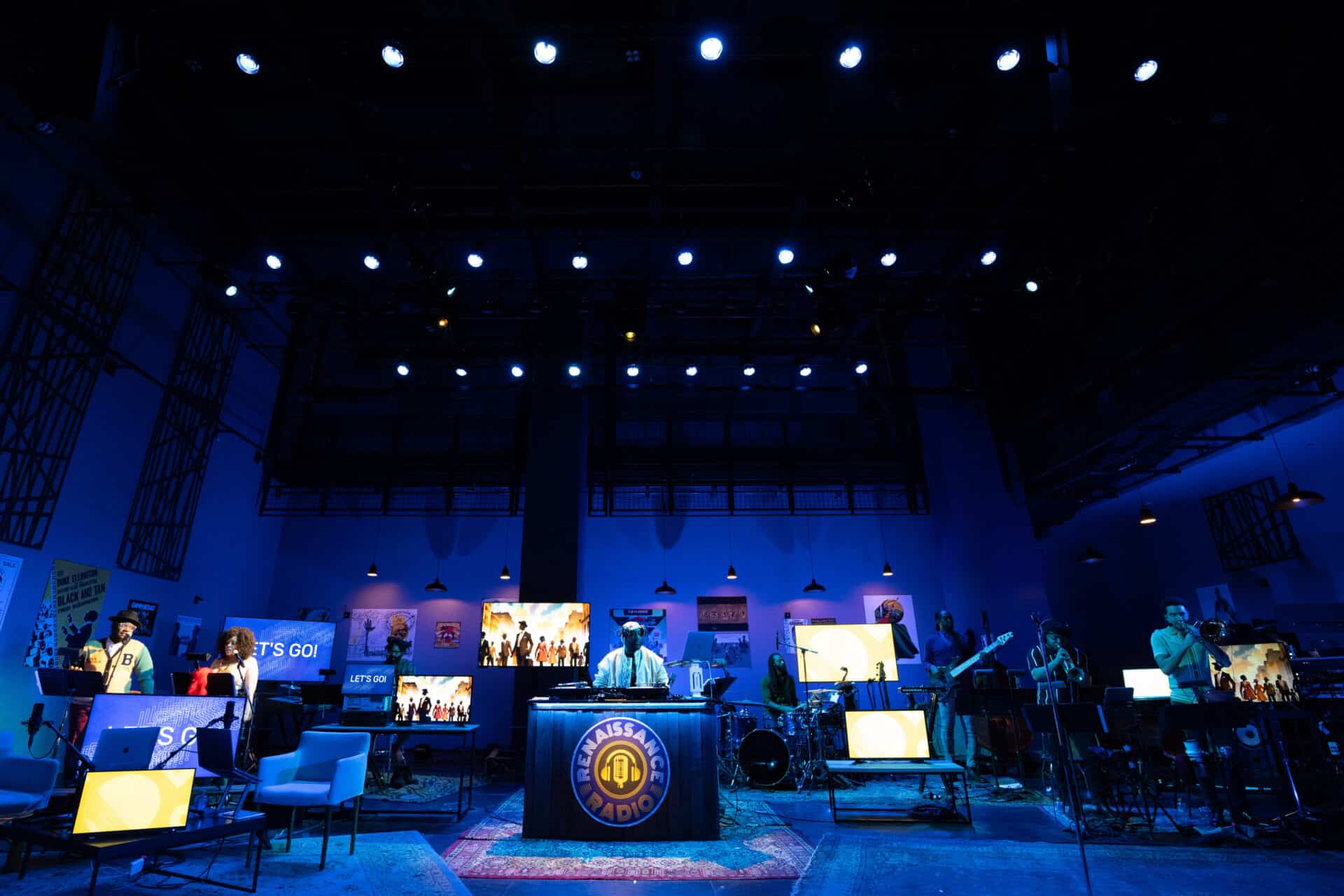
New programming at the Victoria includes an array of Apollo commissions, including the recently announced Soul Science Lab’s The Renaissance Mixtape. (Courtesy Venue)
The Apollo has a vibrant education program that reaches 13,000 students a year and an internship program focused on students of color that helps develop the next generation of live event professionals.
“It’s a very exciting time to step into the next version of ourselves, which includes the legacy that is historic, but also includes the future,” Jones said. “We get to spread our wings.”
In Lexington, Kentucky, it took nearly 50 years for The Lyric Theatre & Cultural Arts Center to make a comeback.
When The Lyric opened in 1948, it was the cultural hub for Lexington’s segregated Black community, offering Saturday morning cartoons, vaudeville and concerts. It was a popular tour stop in the ‘50s for Black artists, including Ray Charles, Count Basie and B.B. King.
“We were part of the Chitlin’ Circuit, so all the famous artists during the ‘40s up until we closed came through here,” explained Christian Adair, executive director of The Lyric. “This was a place for all those people to come because they knew it was safe.”
The theater closed in 1963 and sat dormant and neglected until public pressure prompted the city to turn The Lyric into a multi-use, arts and performance center for the community. The Urban County Council of Lexington allotted $6 million for the project, which broke ground in 2009 and was completed in 2010.
The Lyric “was boarded up and dilapidated and an eyesore to the community here,” said Adair. “It’s based in the heart of the East End, which is a predominantly Black community, marginalized community, underserved community.”
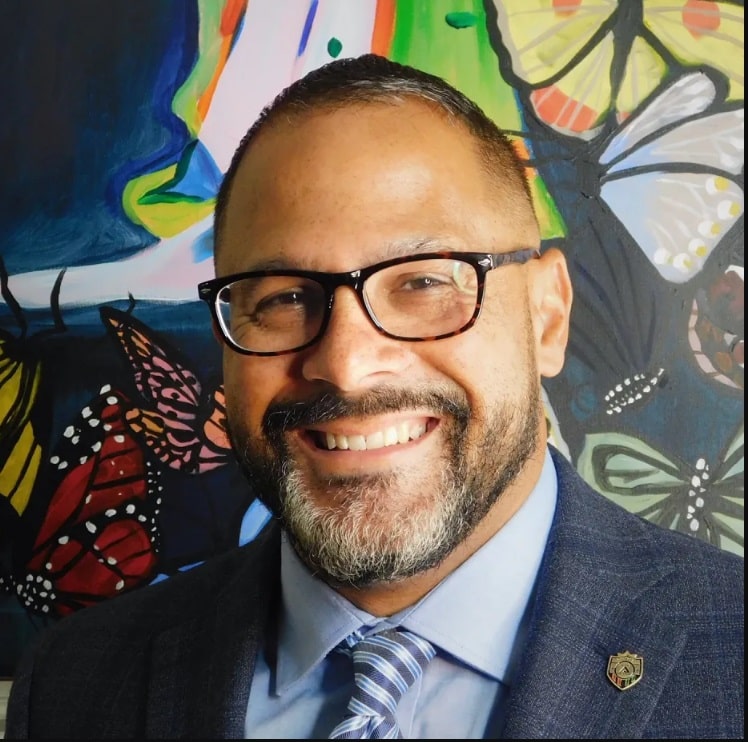
Christian Adair, executive director of The Lyric in Lexington, Kentucky.
The neighborhood may have been economically disadvantaged, but they weren’t lacking persistence and determination.
“The community got together and demanded that the building be reopened,” Adair said. “It took 50 years and they had to keep coming together to demand the city reopen the building and in 2010, it was reopened. The Black community from the East End led the charge.”
Today, the 526-seat cultural arts center includes the auditorium, a museum and library, an art gallery and community space for weddings and civic events. The Black community opened the doors, but The Lyric welcomes everyone.
“I like to sum it up by saying we are about diversity, inclusion and inspiration,” said Adair, who was a marketing professional and DEI specialist for the school district before joining The Lyric in February 2023. “You belong the minute you walk in.”
Operating as a nonprofit, a 15-member board of directors oversees management and programming at the theater, which falls under the auspices of Lexington-Fayette County Urban Government. The city provides partial funding, so The Lyric depends on grants, donations and volunteers.
“It takes a community to keep it going,” offered Adair. “We are standing on the shoulders of the people who came before us and we want to recognize the past and ensure we have a brighter future.”
When it opened in 1910, the Howard Theatre in Washington, D.C., was regarded as the “largest colored theater in the world,” later dubbed the “Theater for the People” by the Washington Bee. For artists on the Chitlin’ Circuit, it was considered a “must play” along with the Royal Peacock in Atlanta, Georgia; the Royal Theater in Baltimore, Maryland; the Regal Theater in Chicago, Illinois; Paradise Theatre in Detroit, Michigan; and The Apollo.
For most of the 20th century, the Howard Theatre entertained audiences with music, dance, drama, comedy and an amateur night, which started in the early ‘30s. In its early days, speakers like Booker T. Washington shared the stage with musicals, road shows, vaudeville acts, theater productions and community programs. Later, Washington, D.C.’s favorite son, Duke Ellington, inaugurated a new era of jazz big bands on the Howard’s stage. Pearl Bailey made her debut at The Howard.
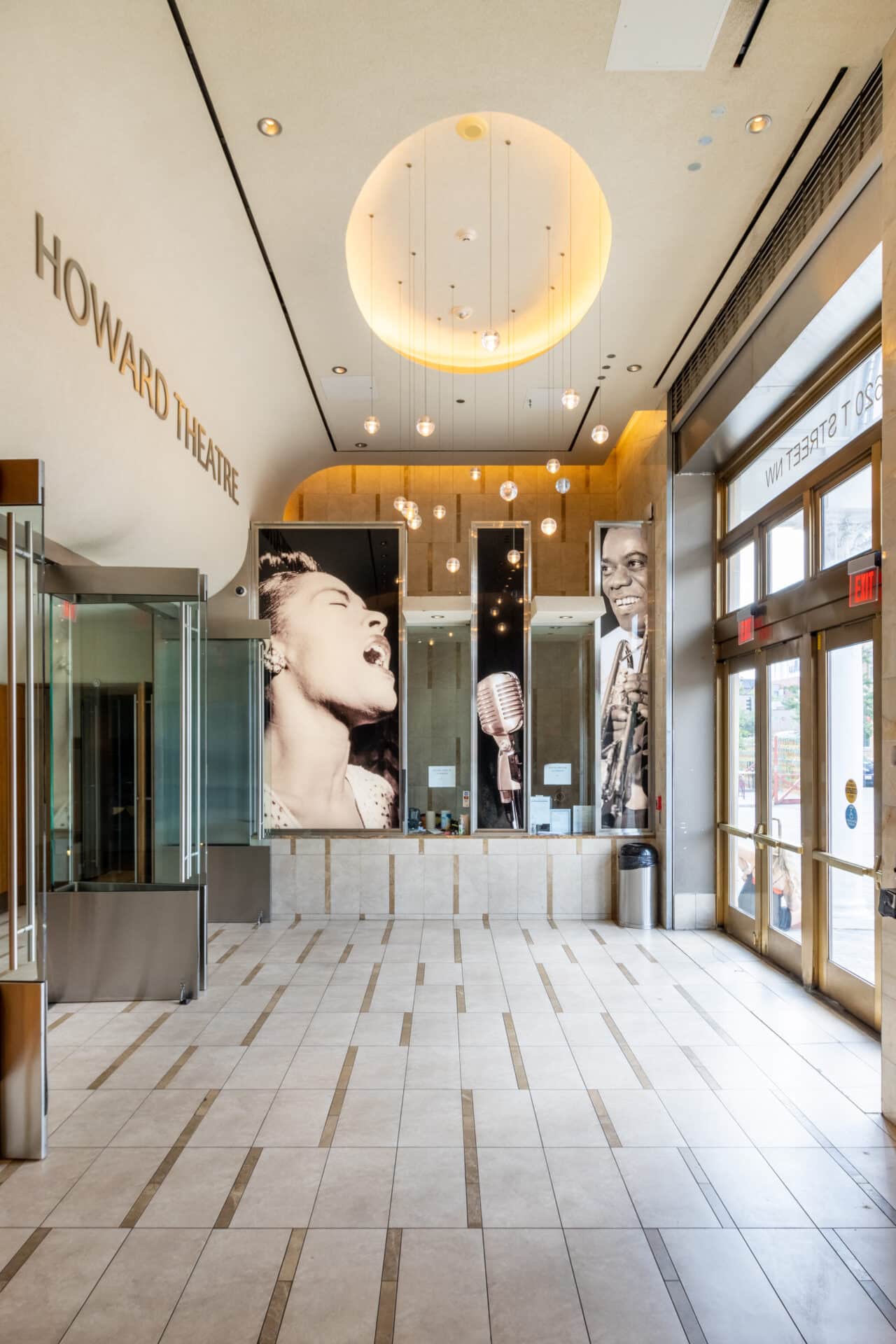
STAGE PRESENCE: Legendary artists to have graced the stage include Ella Fitzgerald, Louis Armstrong, Billie Holliday, Cab Calloway and Nat King Cole, among many others. (Courtesy Venue)
Fortunes changed in 1968 following the assassination of Dr. Martin Luther King, Jr. on April 4. The aftermath of riots and the subsequent decline of the Shaw neighborhood forced the theater to close in 1970.
Numerous efforts were made to bring it back. In 1973, the Howard Theatre Foundation was organized to reopen the venue. The group succeeded in having the venue added to the National Register of Historic Places in 1974. The theater closed again in 1980. It was later purchased by the District government for $100,000 and in 2002, the DC Preservation League listed the Howard Theatre as one of its Most Endangered Places in the District.
In 2005, the Howard Theatre was returned to private ownership when Ellis Development Group, led by Roy “Chip” Ellis and his nephew Malik Ellis, was selected to renovate and restore the theater. The District set aside $12 million in public funding for the $30 million renovation, which began in 2010 and was completed on April 10, 2012.
“Once segregation was lifted, African American professionals, blue collar workers, all the people who made up this really strong community — doctors, professors, lawyers, business owners — they all had the option to move to different parts of the city,” said Chip Ellis, CEO and president of the Howard Theatre Development Group. “When that happened, it really left that whole area like a desert.”
The neighborhood resembled a wasteland, but in 2003 Ellis saw opportunity and took the idea of restoring The Howard to his partners.
“This place is just way too important to sit there dormant,” recalled Ellis, who was developing the block. “It will be the catalyst, the thing that will bring people back to the block and revitalize the economy and be the driver of economic activity. The partners weren’t completely on board.” Ellis took on the task of refurbishing the Howard Theatre, which took seven years to complete. The city owns the ground and all the improvements are owned by the Howard Theater Development Group, which has a 75-year ground lease.
“I’ve been told, I’m kind of a bulldog,” Ellis admitted. “I don’t give up even when it looks like it’s not going to happen. It was not easy, but we hung in there and believed we would make it and kept pushing.”
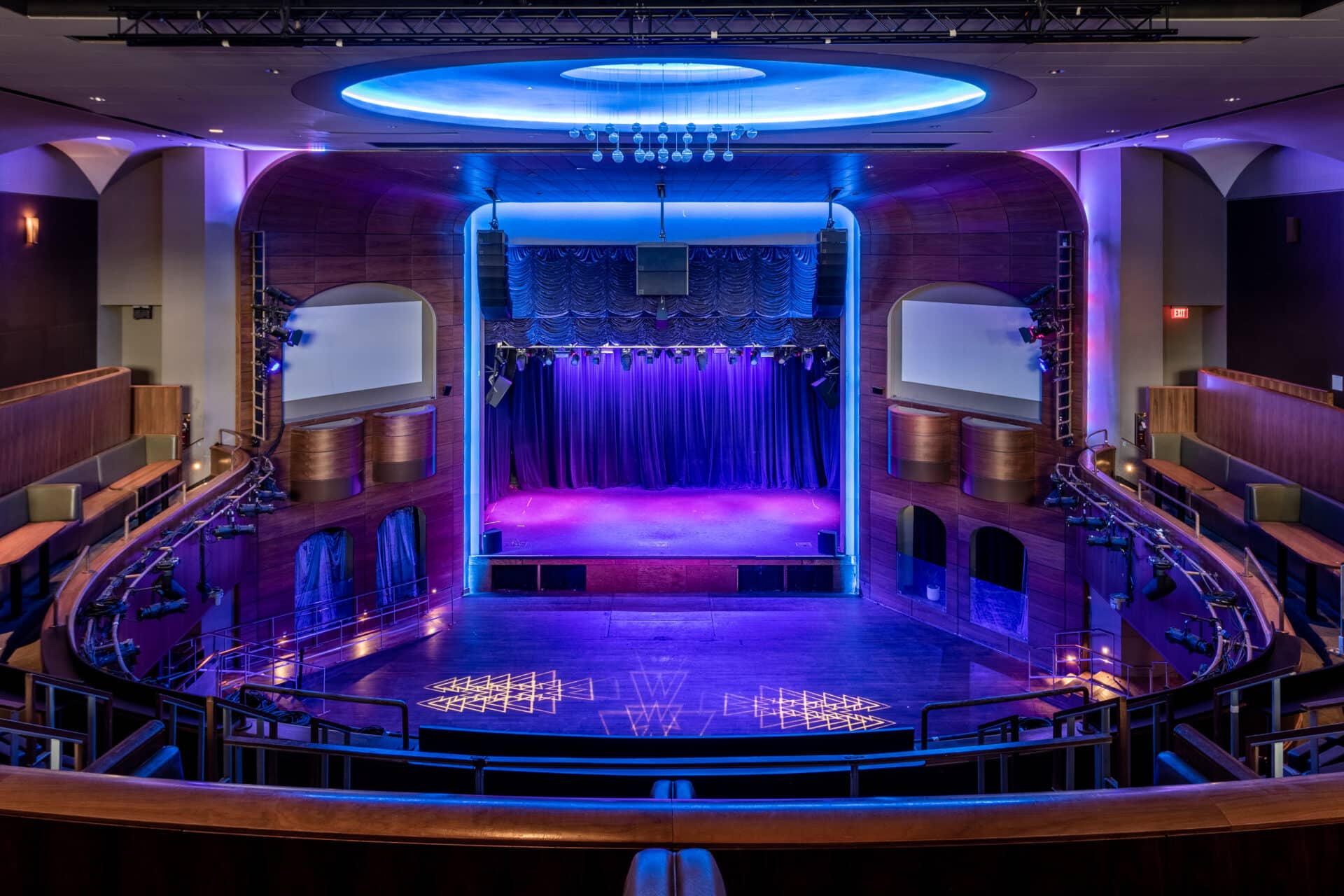
DC HISTORY: Howard Theatre, which opened in Washington, D.C., in 1910, underwent a $30 million makeover before reopening in 2012. (Courtesy venue)
Ellis focused on creating a multi-faceted facility. The renovations included digging out a basement to add a 2,400-square-foot kitchen, dressing rooms and bathrooms that added another source of revenue. The balcony level has booths for easy food and beverage service and there are bars on both levels.
“The Howard was a 2,000-seated venue and now we are 1,200 standing and probably 600 seated,” Ellis said. “But what it does is gives you that flexibility to have a stand-up concert one hour and the next hour you could have a seated fundraiser with tables and chairs.”
Since its reopening, The Howard has hosted a diverse lineup of well-known acts, including Vic Mensa, Anthony Hamilton, Raheem DeVaughn, Chrisette Michele, Tamia, Dianne Reeves, Gregory Porter, Esperanza Spalding, Pete Yorn, José James, The Roots, Slick Rick, Chaka Khan, Sizzla, Aaron Neville and Kendrick Lamar. Partners in the operation include The Blue Note for food and beverage and Union Stage, which handles artist booking.
“Keeping the booking diverse is a good recipe for the future,” Ellis said. “But as an old head, I want to program the theater to remember all of the great acts and all the great music … We want people to know that The Howard has this incredibly rich history in music.”
